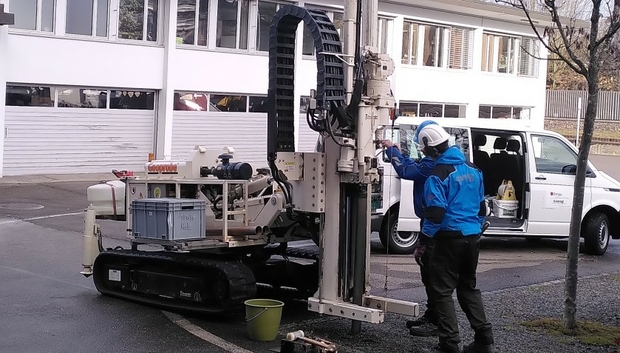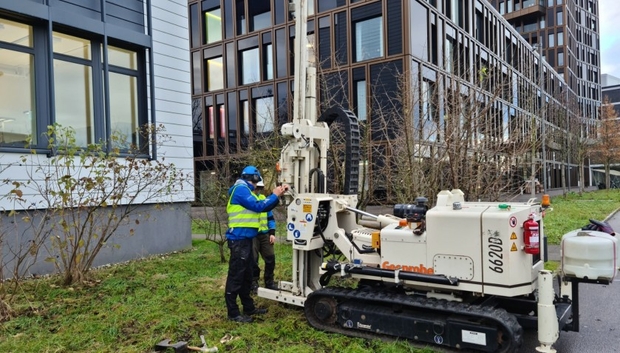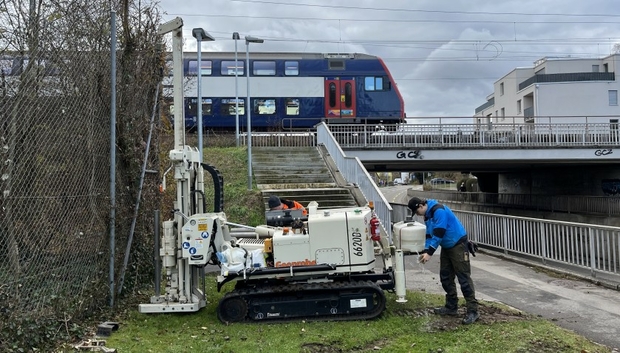Groundwater monitoring
Groundwater monitoring provides a picture of the groundwater flow conditions in the study site through the measurement of the water levels around the project area. It also helps us to understand groundwater properties, such as temperature, and electrical conductivity, so as how they vary over depth. In this way, we can characterize the groundwater extracted from the two main geological units found in the project area over the depth covered by the thermal energy storage facility, namely the more superficial glacial lake deposits and moraine (up to 33 m depth in average) and the deeper sandstone (molasse).
The undisturbed groundwater flow around the project area is measured through four additional boreholes. They have been strategically placed at a far enough distance from the three observation boreholes where groundwater is constantly being pumped out. In these four locations, we continuously measure water levels to gain an idea of the seasonal changes in the groundwater flow in the region.
In the three measurement stations, we have also installed portable mass-spectrometers (miniRUEDI by Gasometrix) that constantly measure the concentration of noble gases, such as Helium, Xenon, and Argon, in the groundwater extracted from different depths. This information can be used to conclude on aspects such as the water age, and can also be exploited to perform tracer tests, using such gases as non-reactive tracers. This type of tests provide information on the transport properties of the aquifer and on its geological heterogeneity.
A full understanding of the groundwater flow conditions and of their variation in time will help us to understand both the physical processes impacting the heat storage capacity of the HT-BTES facility and the results obtained from the rest of the on-site sampling.
Photos: Reto Britt, Eawag












